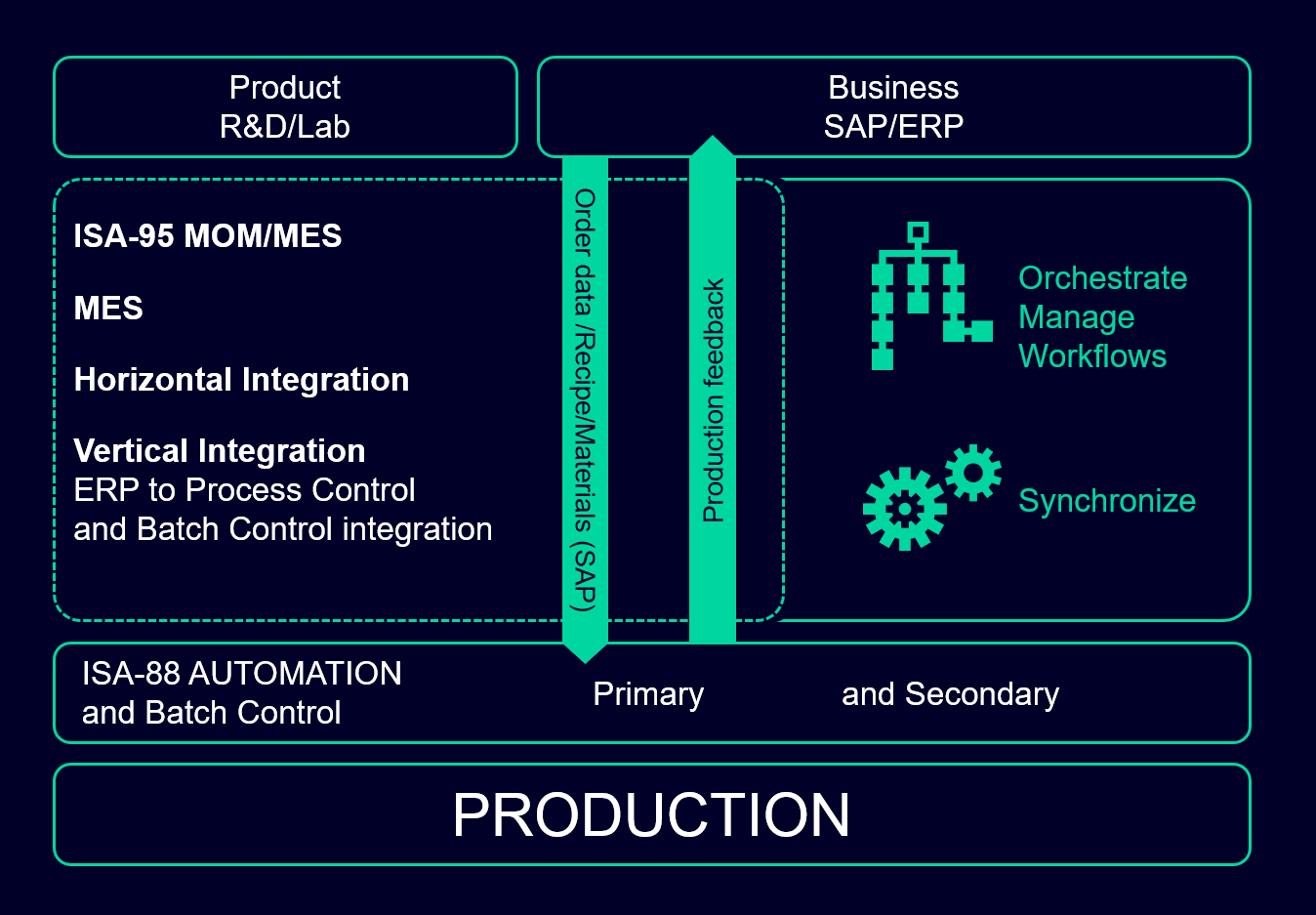The Time Has Come
for Paperless Manufacturing
However, there is now significant overcapacity in some areas, with resulting cost pressure on manufacturers. This increases the pressure to improve both process efficiency and quality in production. Digital solutions for production management help to increase process transparency and lay the foundation for optimizing all aspects of the value chain.
Fine and specialty chemicals manufacturing must become more flexible, more agile, and more efficient, as is readily acknowledged within the industry: new solutions are needed to produce even small batches cost-effectively and in line with specifications. Moreover, due to the growing environmental awareness of consumers and stricter regulations with regard to climate and environmental protection, the industry is being challenged to integrate new raw materials into its value chains and to develop new products based on renewable resources. At the same time, the requirements for process documentation are increasing as well and have become a significant factor in total production costs. The European Chemical Industry Council puts the regulatory costs for the chemical industry as a whole at 12% of total value added.[1] For the fine and specialty chemicals sector, this figure is even higher. All these developments mean that companies in the fine and specialty chemicals sector are looking for new ways to operate their plants more flexibly, efficiently, and transparently and in the most cost-effective way possible.
Data integration as the basis for efficient processes
Analyzing material, process, and equipment data enables manufacturers to identify many unnecessary expenses, especially in batch processes. However, this requires coordination of numerous processes, which often fails due to the lack of equipment transparency and data integration and synchronization between the production or process control level and the enterprise resource planning (ERP) system. This results in unnecessary costs as well as problems with delivery reliability and product quality.
How can companies create the necessary plant transparency? Especially at the interfaces between the ERP system at the enterprise IT level and the manufacturing operations management (MOM) system, but also at the interface between the process control system and the MOM system, tight integration and comprehensive workflow management help companies improve their business and production processes. The first step, then, is to overcome this classic separation between the order management and ERP systems on the one hand and the production and process control level on the other. In addition to this vertical integration, horizontal processes within the process chain must also be coordinated and orchestrated.

Paperless manufacturing connects levels and processes
Today, at many fine and specialty chemicals manufacturers, production still looks like this: Orders are scheduled manually or with the help of tools such as Excel or whiteboards. The company’s ERP system is not linked to the automation and control level. Therefore, orders are printed out from the ERP system and handed over to production on paper. These orders are then manually entered into the process or batch automation system to start production. The data on materials consumed and produced, as with the data on laboratory tests or quality, are also recorded on paper and then entered into the ERP system at the end of the process.
This entire workflow can be managed and executed digitally with a comprehensive MOM system. The MOM system links the data from business processes and production and also integrates other areas, such as materials management and laboratory data. This allows companies to automatically transfer product and order data to production, track them during production, and use them for evaluation and optimization.
Efficient recipe management
A central task of the MOM software is managing production orders via the integrated manufacturing execution system (MES). For this purpose, the MOM system takes the order data from the ERP system and automatically generates the required information for automated batch execution. For example, the Opcenter Execution Process MOM solution from Siemens makes it possible to process a batch completely automatically, based on a master recipe. Via the integrated interface to Simatic Batch, the expert system for batch control, the system creates the corresponding Simatic Batch control recipes based on the information and bill of materials received from the ERP system. The operator only has to start the batch, as the Simatic PCS 7 Batch process control system then executes the specified processes. In parallel, the MOM system records the analytical results of all laboratory operations assigned to the respective batch. If the analysis results meet the batch specifications, the batch is immediately released and the production process and work order are completed with a yield report.
Simple synchronization of processes
With an MOM system, all other processes within production – from material preparation and material management to packaging – can also be executed and managed entirely without paper-based documentation and work instructions. Tools such as workflow management and orchestration support users and help improve production workflows. Users can easily create workflows, reserve equipment and raw materials, and provide the appropriate work instructions for production teams. The MOM system also includes an intelligent tool for detailed scheduling of orders in production. In this way, materials and equipment are used efficiently on the basis of actual data from the production level.

Seamless integration and comprehensive workflow management at the interfaces between the ERP system and MOM system as well as between the process control system and the MOM system help companies improve their business and production processes.
Up to 15% greater output
Paperless manufacturing and the digitalization of production processes can unlock considerable potential in the fine and specialty chemicals industry, as an example of a paint production plant shows. The plant is automated with Simatic PCS 7 and Simatic Batch and was recently enhanced with an MOM system based on Opcenter Execution. Now, recipes are transferred completely automatically from the ERP system to production and, conversely, all relevant batch data are automatically fed back from the MOM system to the ERP system. The MOM system has helped significantly increase both process yield and process quality. The process now requires fewer manual operations, there are fewer errors, and there is an efficient flow of information within production, which altogether has resulted in a 15% increase in daily production output.
Paperless manufacturing helps streamline the entire process chain
As this example shows, an MOM system and the resulting higher level of data integration and visibility can be especially beneficial in existing processes. The automatic transfer of information eliminates sources of error and shortens the time required for the documentation and release of batches, thus helping companies to make better and more flexible use of existing resources. The MOM system also enables an earlier and better connection between product development and production, allowing new products to be brought to market more quickly. At the same time, an MOM system lays the foundation for continuous electronic batch recording and is thus also a building block for many forward-looking solutions such as the complete simulation of processes and batches. In addition, the MOM system can be enriched with information from internal and external supply chain processes. As has become evident during the last few months, material availability and delivery dates can have significant impacts on production, and by connecting data from suppliers with order management, companies can, for example, optimize production capacity on the basis of delivery dates for raw materials.
The concept of Paperless Batch Production with Opcenter Execution Process provides the production data to perform Batch analytics and to identify the Golden Batch of production: The optimal production run to consistently produce top quality batches.
Author
"The production and material data can also be accessed in the MOM system via mobile end devices."






